The Blue Ocean Education Marketing Channel
The problem was the students in California are fed up with all the messages that are coming to them left and right from different companies, educational institutions, and other organizations vying for their attention.
It was one of the toughest moments in my career.
We don't usually have any issues attracting new students for our higher ed clients.
In California, though, things are getting quite heated.
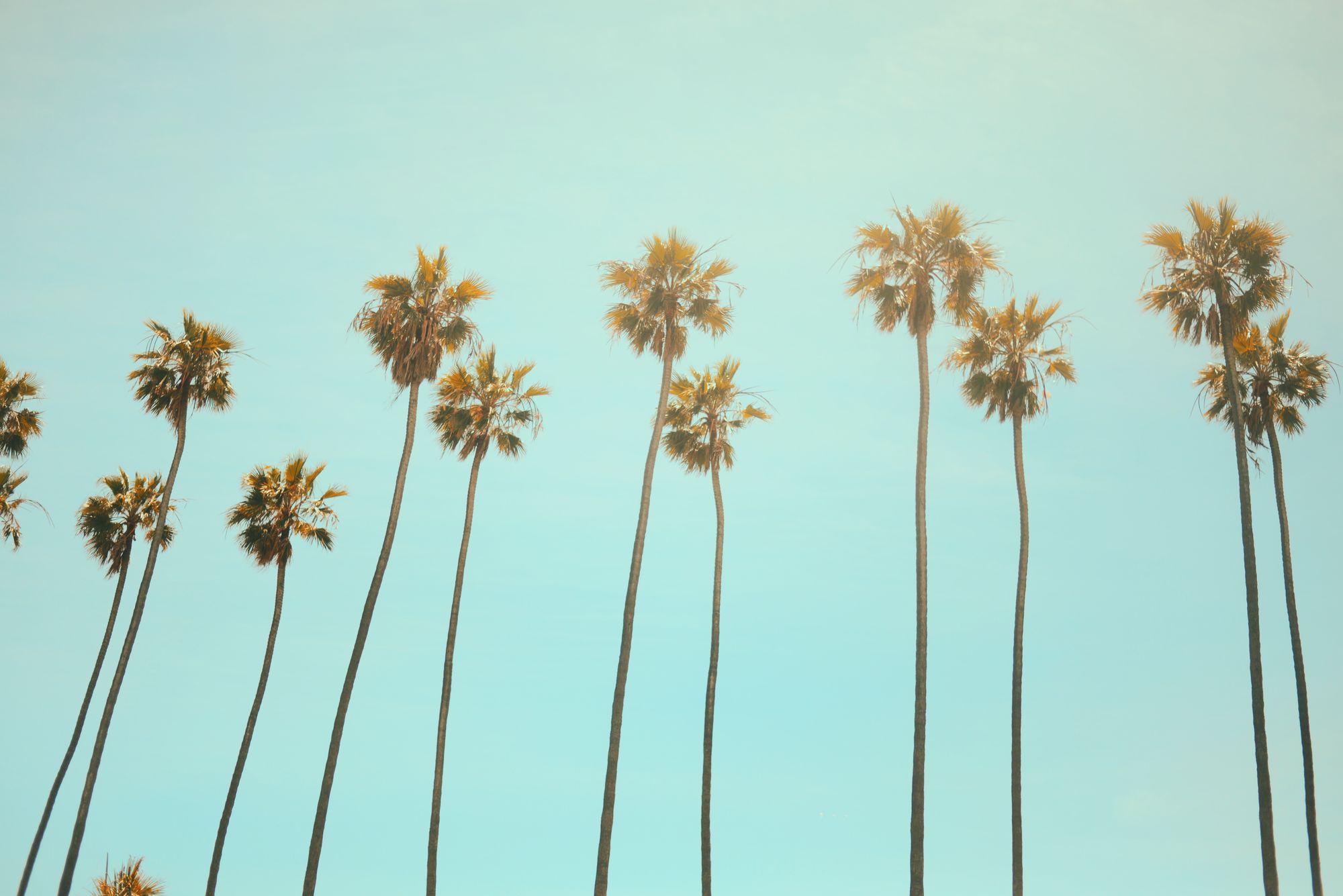
There seems to be a college or university in every corner.
The number of education options is just staggering.
Jane D., the Dean of Admissions, and a client of ours was frustrated.
For a couple of years, it had been great. We had rolled out all our marketing systems, leads were flowing in. New students were enrolling like clockwork.
But the past few months had been tough.
And now there was a new college next door targeting the same demographic.
Jane had built an advanced in-house marketing team. She had been working with us for a while, but she had a personal interest the subject.
Her team had developed capabilities in PPC, PR, SEO, CRO and more.
She knew all the concepts of how to persuade, how to create stories and how to build funnels.
That was not the problem.
The problem was the students in California are fed up with all the messages that are coming to them left and right from different companies, educational institutions, and other organizations vying for their attention.
It's like they've become immune.
This was getting me worried because we know it's a trend and it's coming to other areas, and I could not accept that there is no solution.
That's what made it into one of the toughest moments of my career.
Every day we were racking our brains.
- What can we do differently?
- What can we change in our process?
- What's the real problem here?
And then it came to us.
Attention saturation.
We came across a graph from GroupM's annual interaction report.
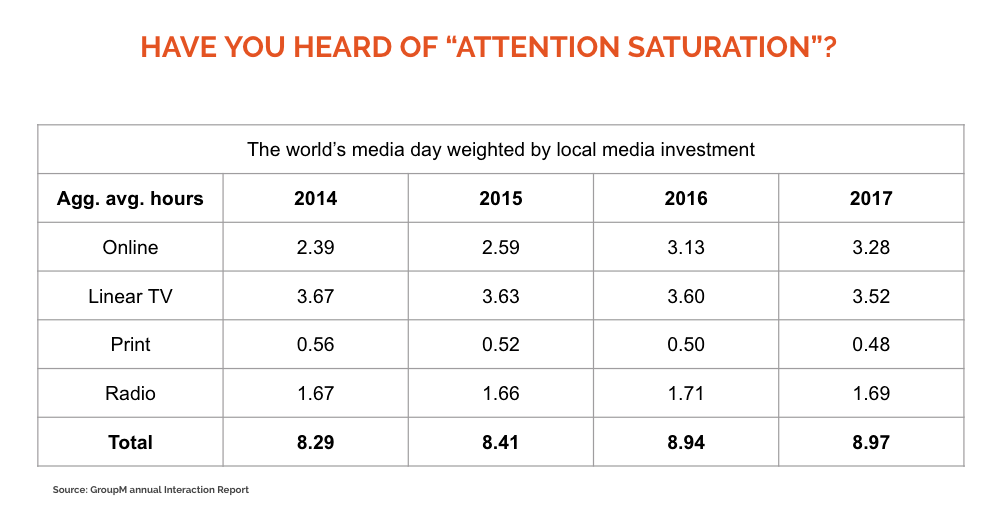
It seems that the world is not consuming any more media.
It's just changing and shifting towards digital, but there's a threshold.
If you think about it, it makes absolute sense. How much media can you consume in a day?
The answer appears to be around eight hours.
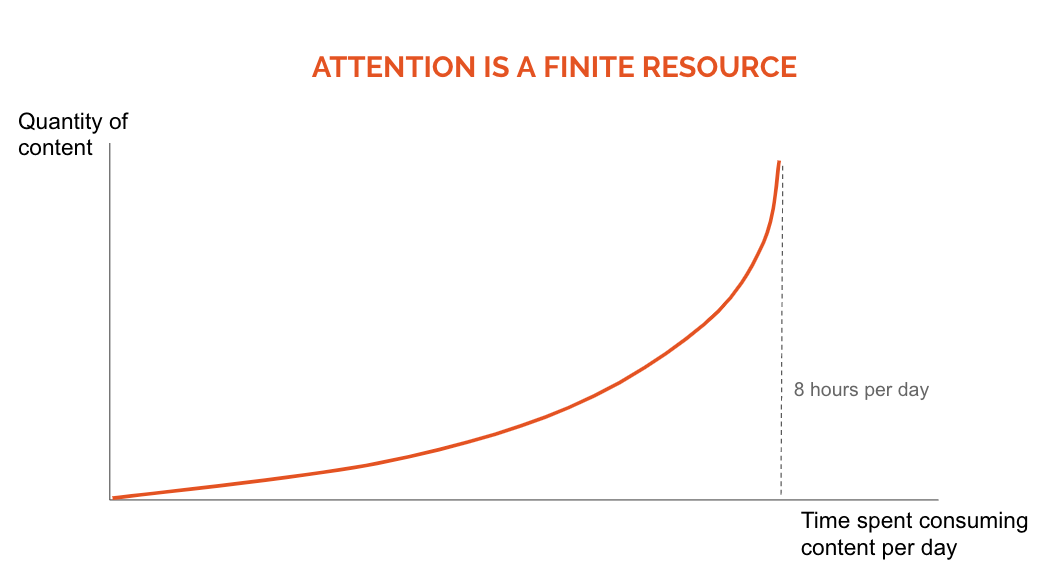
Even if we think of double screens (and we know that in many households - probably in your home as well - some family members are on a second or even third screen).
So even with double screens, our attention has limits.
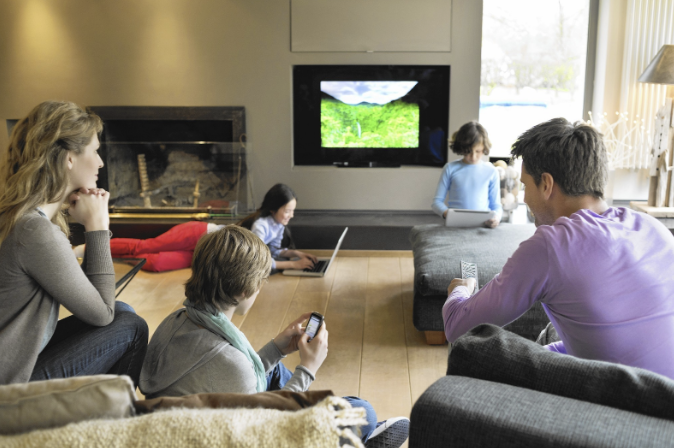
We can see this when we look carefully at the results of companies like Facebook.
We can see that the number of impressions isn't growing anymore.

The cost for an ad is itself growing.

Facebook even mentioned it in one of their earnings calls.

The fact is we're coming close to attention saturation.
That's what's happening in California right now.
This first happens on screens. So it got us thinking.
Do you know the concept of a blue ocean and a red ocean? A red ocean is full of blood. Everyone's already there. Everyone's competing.
The blue ocean is empty.
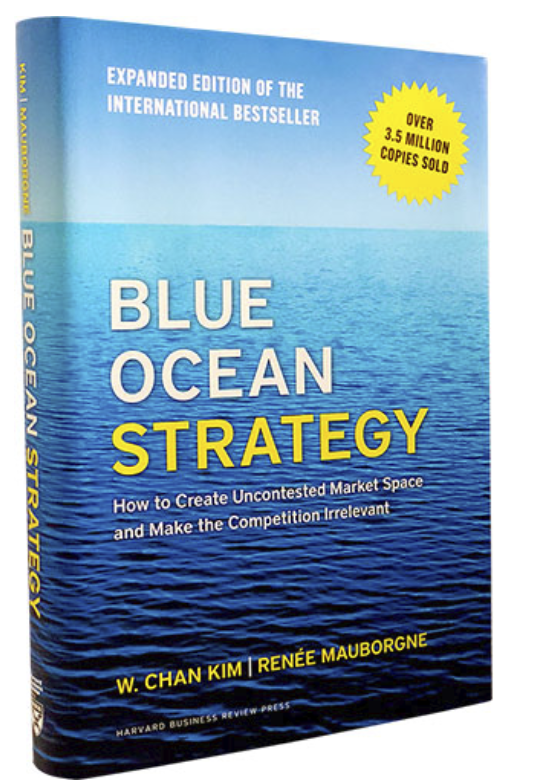
"Where is the blue ocean?, we thought.
Audio.
That's why we designed our podcast strategy.
Podcasting is the only online content platform that allows for passive, indirect consumption while doing other things.
This has some fantastic benefits.
- Long-form content works like a charm on audio.
- Bounce-rates are low as people don't "click away."
- The emotional impact of your content is high.
And you can leverage things like the commute. The average commute time in the US is 25 minutes according to the US Census Bureau.
Well, long-form podcasts work great because of your commute, your chores, your lunch break.
What's more, even if you're hearing about podcasts everywhere nowadays and you think the opportunity has come and gone, the numbers actually show that it's not yet a saturated channel.
There are only 200 thousand active podcasts versus 19 million active blogs and 1 billion YouTube viewers (Source: Pat Flyn).
So podcasts are still in their infancy.
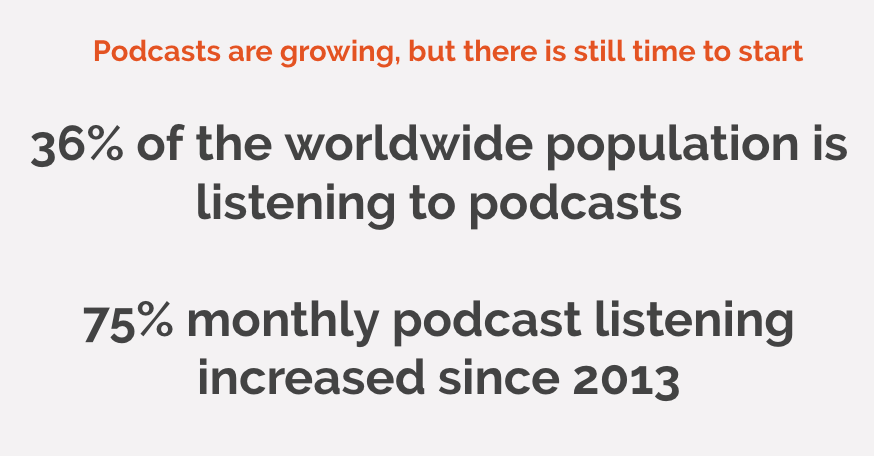
This means it's still early but you need to hurry.
So if we agree that focusing on grabbing more attention is a losing strategy, what do we focus on?
Seth Godin tells us that we should focus on Trust.

The podcast format is a great way to scale trust. You must shift your marketing from a strategy focusing on attention or eyeballs to a strategy focusing on trust and intimacy. That's what people crave.
Starting a podcast is the easiest way to create stories and content that resonate with your community and therefore create trust.
The voices in the podcast listener's ear are casual, warm and allow for in-depth conversations.
Have a look at some of these articles and stories.
Just think of how easy it could be to create an engaging podcast episode about how a graduate changed her life. You would call up the graduate, she'd be happy to talk to you, you'd have a nice chat, a thoughtful interview about what she's up to now after college, and it would be engaging and fun.

Another episode could be about important life decisions.

Yet another about rich educational programming.

How about entrepreneurial dreams come true?

Or exciting multicultural experiences?

Or even tips and tricks about how to get into your institution, helping out your prospective students?

Community service stories...

...or even personal growth stories.

Stories about the arts.

The list goes on and on. There's so much that you can cover.
So much going on in your community that you can tease out on a podcast.
Also, frankly, the experience is seamless.
Jane set everything up and started in less than 30 days.
All she did after that was have nice warm in-depth chats. That's it.
- People love it.
- It's flattering.
- It's fun.
- It's easy.
- People say yes.
Jane's application numbers demonstrated a material uplift which we could only attribute to the growing listener base of the podcast.
As a bonus, she also then repurposed the episodes into different content pieces including Facebook posts, video bites, audio soundbites, Instagram Stories, Instagram quotes, YoutTube videos, Click to tweets, even long-form blog posts.

Her social media was buzzing, and people were paying attention because there's still a blue ocean with podcast listening.
